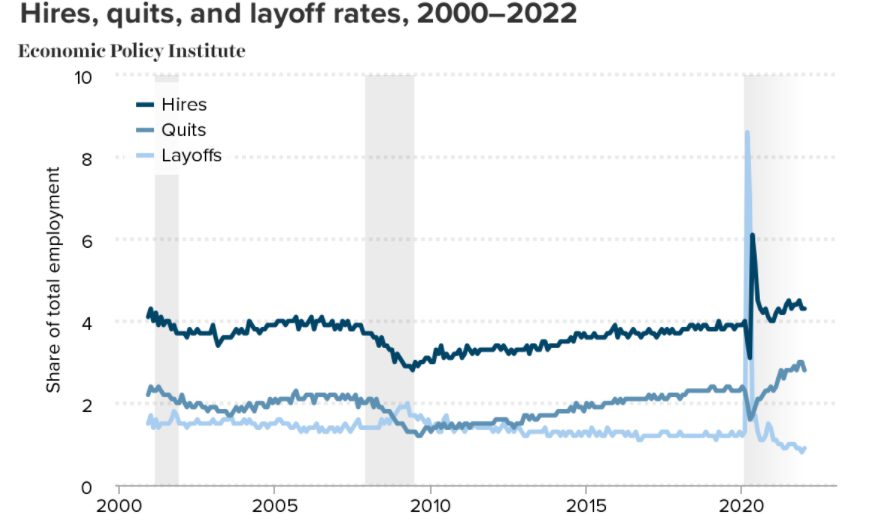A Closer Look At The Great Resignation

One of the trending news stories about the labor market has centered around the large number of American workers resigning during the pandemic.
The so-called Great Resignation is real, and data from the Job Openings and Labor Turnover Survey (JOLTS) is revealing the behavior behind this economic trend.
The JOLTS survey shows how many job openings there are each month, how many workers were hired, how many people quit, how many people were laid off, and more.
Combined with other data – such as quit rates by industry – the picture of the U.S. labor market is becoming more clear.
Notable Data On The U.S. Labor Market
Elise Gould, a senior economist at the Economic Policy Institute, shared some key takeaways and charts from the Jan. 2022 JOLTS survey in this Twitter thread.
- In every major industry, the hire rate is outpacing the quit rate. This shows that when people resign, the majority are not dropping out of the labor force completely.
- Quits are declining slightly (2.8% vs. 2.9% in Dec. 2021), layoffs are increasing slightly (1.2% vs. 0.8% in Dec. 2021), and hires remain steady at 6.45 million. Quit and layoff rates indicate each metric as a percent of total employment.
Overall, hiring as a percent of total employment remains higher than pre-pandemic levels dating back to the early 2000s. Also, the quit rate is still higher than pre-pandemic levels, while layoffs are lower than pre-pandemic levels.
To drill down into sectors, Indeed shared information on quit rates by sector (see below). Leisure, retail, and construction continue to see a huge uptick in employee churn.
Curious how your company can improve its employee retention? Read this post on ways to drive engagement.

